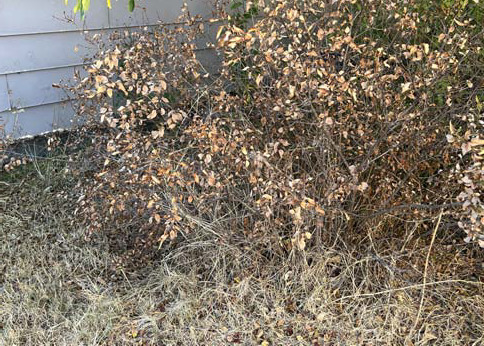Sports briefs
Hesston tops Defenders HESSTON — The Hesston High School volleyball team downed the Wichita Defenders in three sets in a dual meet Tuesday in Hesston. The Larks won 25-16, 25-7, 25-11.
Hesston tops Defenders HESSTON — The Hesston High School volleyball team downed the Wichita Defenders in three sets in a dual meet Tuesday in Hesston. The Larks won 25-16, 25-7, 25-11.

Warren Leo Crist went to be with his Lord and Savior on August 27, 2022. Leo was born on March 24, 1927, on a farm in Osborn County, Kansas. He was the second of four children born to Louis and Bernice Crist.

The Kansan Staff McPHERSON — The Newton High School volleyball team opened the season with a 4-1 start at the Ark Valley-Chisholm Trail League Pre-Season Tournament in McPherson. The Railers took second in the six-team round robin tournament.

KANSAS CITY, Mo. (AP) — The Kansas City Chiefs wanted to get younger around quarterback Patrick Mahomes and the rest of their veteran core.

The latest covid-19 surge, caused by a shifting mix of quickly evolving omicron subvariants, appears to be waning, with cases and hospitalizations beginning to fall. Like past covid waves, this one will leave a lingering imprint in the form of long covid, an ill-defined catchall term for a set of symptoms that can include debilitating fatigue, difficulty breathing, chest pain, and brain fog.

At the Giving Garden we make it a practice not to plant the same thing in the same spot every year. Why would we do this? Rotating vegetable crops is a standard way of helping prevent disease from being carried over from one year to the next. Rotation means that crops are moved to different areas of the garden each year. Planting the same crop, or a related crop, in the same area each year can lead to a build-up of disease. Also, different crops vary in the depth and density of the root system as well as extract different levels of nutrients. As a rule, cool-season crops such as cabbage, peas, lettuce and onions have relatively sparse, shallow root systems and warm-season crops such as tomatoes, peppers and melons have deeper, better developed root systems. Therefore, it can be helpful to rotate warm-season and cool-season crops.

By Pat Melgares K-State Research and Extension news service MANHATTAN – Cool-season grasses, like the Kentucky bluegrass and tall fescue lawns common to many parts of Kansas, have had about enough of summer. The state’s high temperatures and sporadic rainfall often cause cool-season varieties to become thin by summer’s end.
K-State Research and Extension news service MANHATTAN — Body mass index is one measure that people use to evaluate their overall health when talking with their medical team. In much the same way, veterinarians and beef producers are able to measure the well-being of the cow herd by assigning a body condition score of each animal, according to the experts at Kansas State University’s Beef Cattle Institute speaking on a recent Cattle Chat podcast.
Newton- Annie Martinez, 78, died Sunday (Aug. 28, 2022) at her home.